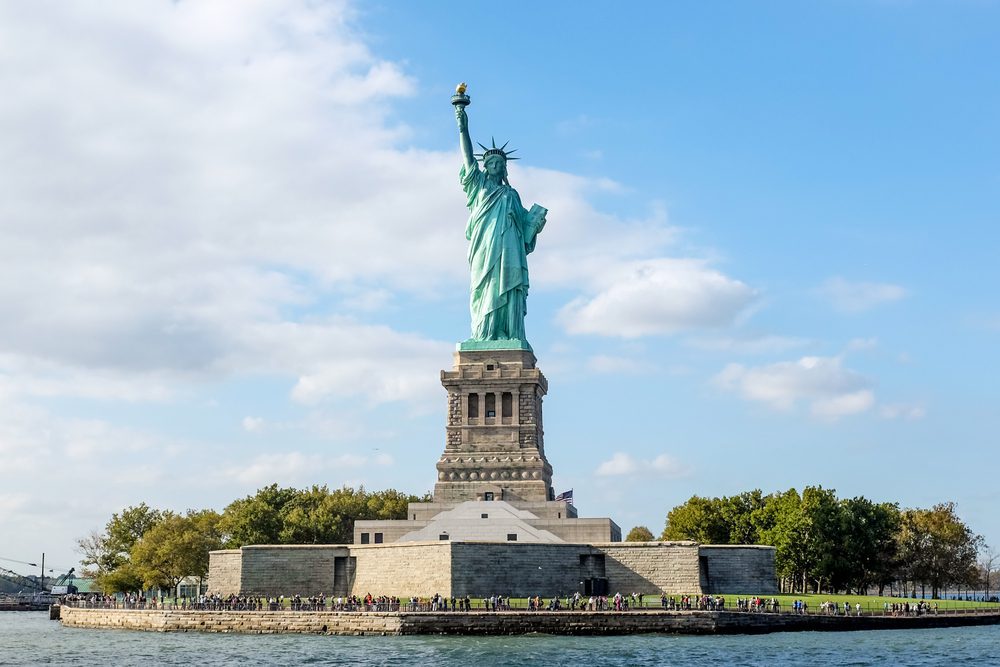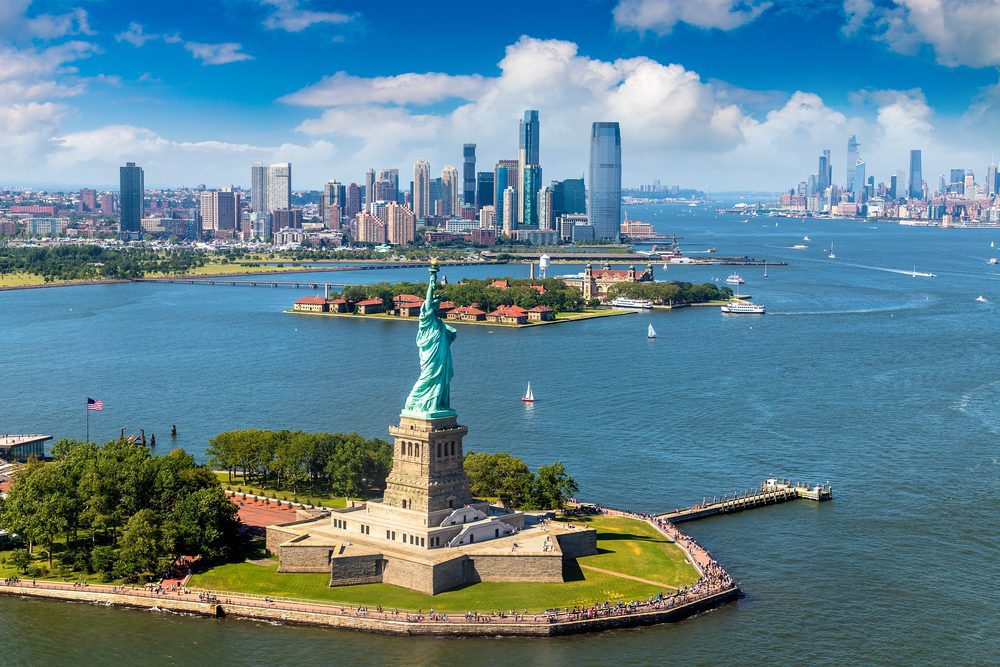How Much Do You Know About the Statue of Liberty?
The Statue of Liberty is probably the greatest symbol of America. In fact, it’s even hard to imagine a time without her. However, it’s always nice to go back and remember the complicated journey she went through from France to the shores of New York.
It’s quite unforgettable if you ask me. If you’re curious to know what happened along the way and how much money was involved, you’ll enjoy reading this article.
Trust me, after reading this, you will never see Lady Liberty the same again. Here are all the mind-bending facts regarding the Statue of Liberty you should know about:

Crowdfunding money paid for the statue.
When Frederic Auguste Bartholdi first had the idea of the statue, do you know what was his biggest obstacle? That’s right: money. Since the French government didn’t offer anything to help pay for that statue, all the funds had to come from France.
Citizens were highly encouraged to donate as much as possible. Bartholdi contributed by organizing all kinds of rewards for donors, including miniature statues of Lady Liberty engraved with the name of the contributor.
The workshop where the statue was being built was even opened to the public. Of course, all in exchange for a small admission fee meant to help raise money.
When the statue was initially assembled in France, Bartholdi invited some people to dine there. Yes, inside the statue. Luckily, all these fund-raising events raised over $250,000 in total.
The statue’s design was meant for the Suez Canal.
In the late 1860s, right before he was ever asked to design the Statue of Liberty, Bartholdi decided to submit a similar idea for the entryway of Egypt’s Suez Canal.
However, his design was rejected due to increased costs. But he was a lucky man, and he was eventually able to use the same concept years later when asked to make the Statue of Liberty.
Even if specific changes had to be made for the American version, the two projects were fairly similar. They both portrayed a robed female figure with a torch.
The face of the statue was inspired by a mother.
While the famous saying might be “write what you know,” Bartholdi decided to take it one step further and build what he knew. As the torso and arms were modeled after his dear wife, the stern face of the Statue of Liberty was inspired by his mother.
Now, Augusta Charlotte Bartholdi will forever have her face on one of the most iconic landmarks in the world.
Parts of the statue arrived in America early.
Don’t worry, this was totally intentional. Another great example of the crowdfunding tactic is the disembodied hand and torch of the Statue of Liberty, which sat in Madison Square Park in New York for no less than six years.
This was meant to inspire the Americans to start their own donation pool. Souvenir photographs were then sold, and people could even pay to climb a ladder and stand on the torch balcony. You have to admit, it’s definitely a unique form of advertising.
The statue was meant to act as a lighthouse.
It wasn’t enough that the statue stood as a symbol of freedom. No, Lady Liberty had to be a lighthouse, too. When the project was initially announced, we decided that the statue could have a double purpose: to represent freedom and guide sailors into New York Harbor.
After trying a couple of ideas, Bartholdi ended up cutting windows in the flame of the torch and installing electric lights inside. After no more than a week in New York City, President Grover Cleveland put the Lighthouse Board in charge of statue lighting operations.
This might have sounded like a huge honor, but in fact, it was nothing but a headache. The statue was extremely expensive and quite useless as a lighthouse. Besides, no one was able to see it from Manhattan after dark. They eventually gave up on the idea in 1902.
Opening day was 10 years late.
They originally intended to inaugurate the statue for the centennial celebration of the Declaration of Independence. Even if it was nothing but an idea at the time, the goal was mainly to give the statue to the United States in 1876.
After a couple of delays caused by unsuccessful fundraising attempts, construction, and other design debates, the official opening took place on October 28, 1886.
The pedestal cost just as much as the statue.
Another reason why the inauguration was delayed was due to the time it took to build the statue’s pedestal. As France took on the tasks of building and paying for everything, the United States was in charge of the pedestal.
Well, as it turns out, it was a lot more difficult than anyone initially planned. More than that, when the statue arrived by boat in New York Harbor, the pedestal wasn’t even halfway done.
As it turns out, raising money in America was a lot harder than raising money in France. Of course, it didn’t help that the pedestal was way more expensive than planned.
That’s when the famous journalist Joseph Pulitzer decided to step in and start a crowdfunding campaign of his own. He even promised that anyone who donated money to the pedestal would even get their name printed in his newspaper.
The opening celebration started a classic NYC tradition.
Fortunately, the delay in opening had zero effects on the celebrations. A parade was eventually held in Manhattan for all the residents of New York City the day after opening.
In order to enjoy the celebration, the New York Stock Exchange employees took the ribbons of paper from their thicker tape machines and threw them out the window.
This random act of festivity ultimately became a special tradition in the city. Every parade was accompanied by the well-known ticker tape falling from the sky.
Ultimately, these financial data-tracking machines became outdated, but the tradition still lives on. Nowadays, we only use confetti and shredded paper.

Lady Liberty wasn’t always green.
The Statue of Liberty is mainly made of copper, which only turns green when heavily exposed to water and air. Naturally, when the statue arrived in 1886, she was pretty much a dull brown color, like a penny.
It took around 30 years for her to turn totally green. This green sheen, also known as verdigris, is actually meant to protect the statue. The copper layer is a lot thinner than what people would expect.
Left to stand on its own, the statue would otherwise collapse. However, inside the body, there are a series of steel rods and even a skeletal structure that’s meant to support the weight of the statue and prevent it from collapsing.
There’s an old war fort right under the statue’s pedestal.
Before opening day or the pedestal, even before Bartholdi came into the picture, there was an immense structure sitting on Liberty Island. Fort Wood is the star-shaped building underneath the pedestal.
It was built way before anyone even thought of building a statue in New York. In preparation for the War of 1812 against the British, U.S. troops established a series of forts around New York Harbor to protect the city from invasion.
Believe it or not, the British never attacked the harbor, so the fort was never used in combat.
Since we’re at it, I want to share with you this amazing LEGO Statue of Liberty building set. It’s great for family gatherings, especially for Holidays!
If you’re eager to read other interesting things, you should definitely try this: This Is What Your DNA Can Say About You. 6 Amazing Facts!








